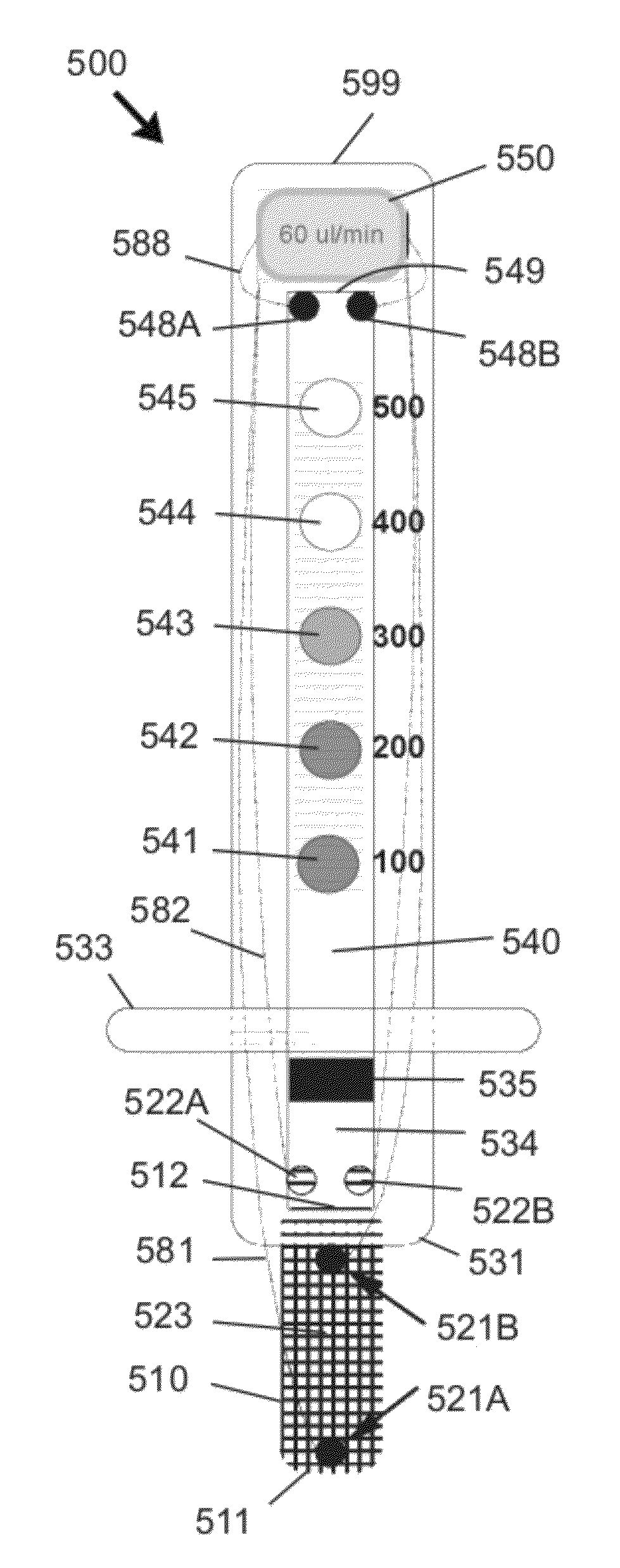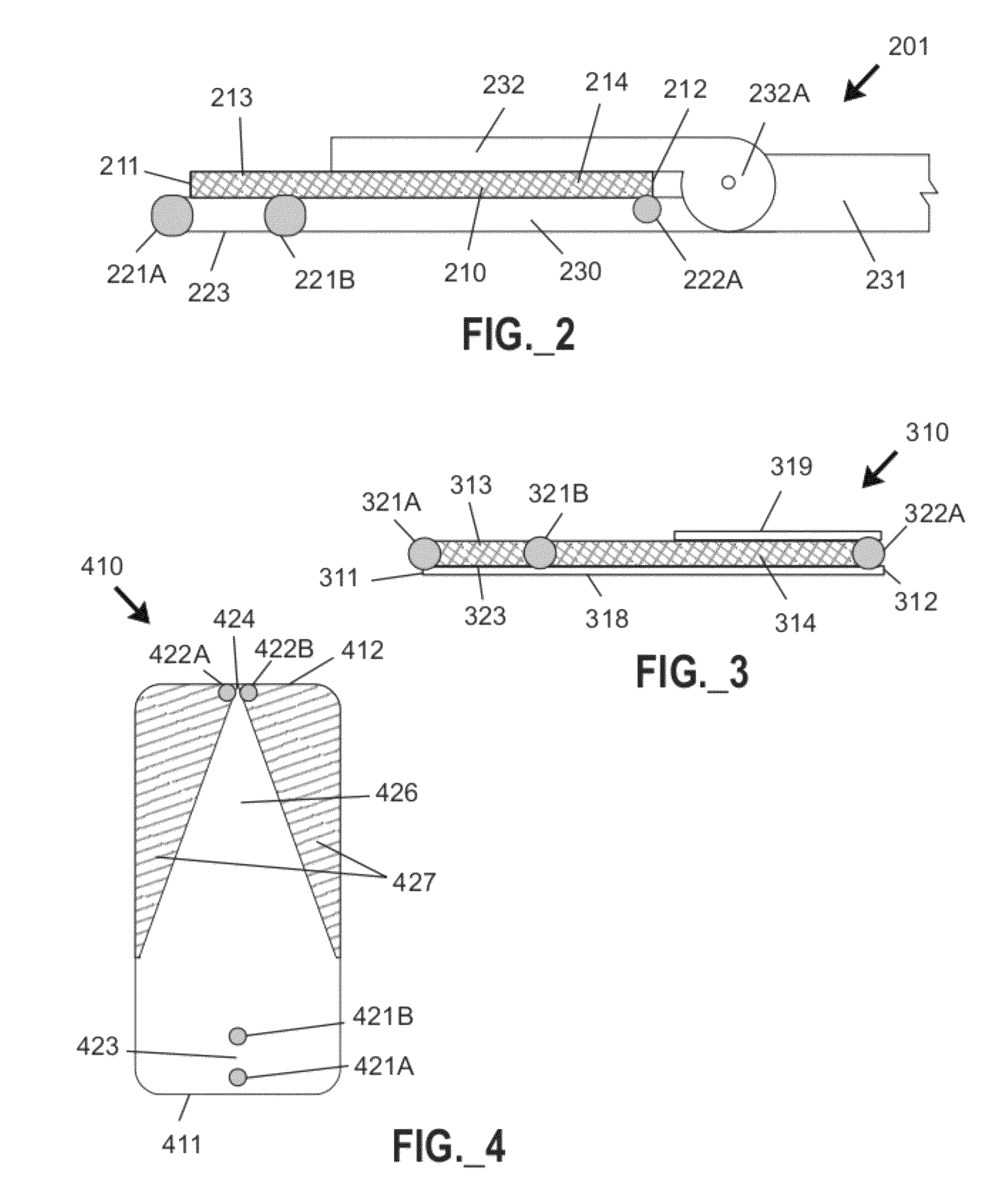Diagnostic device and method for sensing hydration state of a mammalian subject
a technology of hydration state and diagnostic device, which is applied in the field of diagnosing device and method for sensing hydration state of mammalian subjects, can solve the problems of affecting the kidneys, affecting the cardiovascular function, and affecting the thermal dissipation of exercise, etc., and achieving the effect of reducing the risk of kidney damage, and reducing the hydration ra
- Summary
- Abstract
- Description
- Claims
- Application Information
AI Technical Summary
Benefits of technology
Problems solved by technology
Method used
Image
Examples
Embodiment Construction
[0056]The present invention relates in various embodiments to sensing of salivary secretion rate (e.g., as may be measured by sensing time to collection of saliva in multiple portions or the entirety of a liquid collection) as indicative of state of euhydration or dehydration. As noted previously, determination of state of euhydration or dehydration may be further aided by sensing of at least one analyte in saliva.
[0057]Research recently performed by Dr. Neil P. Walsh of the University of Wales (Bangor) School of Sport, Health and Exercise Sciences (as subsidized by the assignee of the present application and not yet published) has demonstrated that dehydration is accompanied by a reduction in salivary secretion rate, as well as increases in certain analyte contained in saliva, such as IgA and albumin. FIGS. 13-15 embody line charts including values of salivary flow rate, secretory IgA concentration, and salivary albumin concentration, respectively, plotted as a function of time for...
PUM
 Login to View More
Login to View More Abstract
Description
Claims
Application Information
 Login to View More
Login to View More - R&D
- Intellectual Property
- Life Sciences
- Materials
- Tech Scout
- Unparalleled Data Quality
- Higher Quality Content
- 60% Fewer Hallucinations
Browse by: Latest US Patents, China's latest patents, Technical Efficacy Thesaurus, Application Domain, Technology Topic, Popular Technical Reports.
© 2025 PatSnap. All rights reserved.Legal|Privacy policy|Modern Slavery Act Transparency Statement|Sitemap|About US| Contact US: help@patsnap.com



